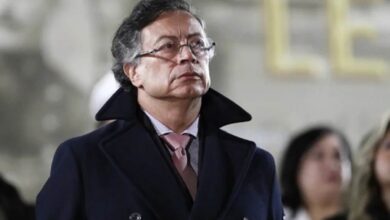We tell you everything you need to know about the next legislative elections in Argentina, which will set the trend for the presidential elections.

These are the Primary, Open, Simultaneous and Compulsory Voting (STEP) that were created in 2009, with the aim of establishing the different candidacies for all political spaces. Photo: Adobe Stock, LatinAmericanPost
LatiAmerican Post | Ariel Cipolla
Listen to this article
Leer en español: ABC de las elecciones primarias en Argentina
Argentina will hold its PASO elections on September 12. These are the Primary, Open, Simultaneous, and Compulsory Voting (STEP) that were created in 2009, with the aim of establishing the different candidacies for all political spaces.
It is a preliminary instance of the legislative elections, which will take place on November 14. This is the case since it allows us to see which political parties are entitled to present themselves for the next phase (they need at least 1.5% of the votes of the district) and which are the official and final representatives of each front, in case of to have an open intern.
Also read: 3 New Progressive Laws in Latin America: Why Progress Is Not Guaranteed
Thus, these midterm elections will be fundamental for the country. In the first place, because many seats will be renewed in the two chambers (127 in Deputies and 24 in the Senate), corresponding to different provinces, which will allow us to see the direction that the country will take in legislative matters for the coming years.
However, legislative elections are also essential to see how much support the current ruling party has, especially in a complicated context at the health and economic level, such as Argentina. Some data, such as the more than 110 thousand deaths, accumulated inflation of 25.3% or 45% of poverty are the axis of the opposition campaign.
The current Frente de Todos, governed by Alberto Fernández, has a majority in Deputies and Senators (120 members in Deputies and 41 in Senators). This was not the case with Mauricio Macri, who had a minority in both chambers throughout his term. Well, in these elections, the ruling party is going to put 51 seats in Deputies and 5 in Senators at stake.
They will seek, at a minimum, to keep the places to approve legislative projects, as can happen with the bill so that the Internet is a public service, one of the axes of the campaign. On the other hand, from the opposition, divided into different electoral fronts, it will seek to gain support in both chambers, with the aim of discussing the official agenda.
In any case, from all spaces they seem to agree on one thing: although the political trend in both chambers may change depending on the results, the midterm elections serve as a kind of "survey" that political leaders use to measure interpretation electorate politics.
Hence, there are internal ones, which not only arise so that voters can define their favorite candidates and ideas within the same space but also to see who can be possible "presidential" for 2023. That is the other importance of this choice.
Well, the first thing to note is that everything varies by district. For example, according to the M&F pollster, the current candidate for deputy for the City of Buenos Aires for Together for Change, María Eugenia Vidal, would beat Leandro Santoro by 2 points, candidate for the current ruling party of the Frente de Todos (29, 1% versus 27%).
????????#Argentina | Encuesta PASO Buenos Aires
???? Lista FdT: 38%
???? Lista JxC: 33%
???? Lista AL: 7%
???? Lista VV: 5%
???? Lista FIT: 1%
Indeciso: 5%Encuesta M&F /Agosto#Elecciones2021
— DATOS #Elecciones2021 (@Datoworld) August 8, 2021
Let's move on to the province of Buenos Aires, which is always seen as the most important in electoral terms since most of the electorate (approximately 38%) is there. This causes the trend of local elections to be replicated on a national scale. For example, in the presidential elections, the winner of the governorate of the province is usually from the same party as the elected president.
Well, we know that the opposition space of Together for Change is “divided”. On the one hand, Diego Santilli appears, who would end up prevailing against Facundo Manes, by 23% to 10%. However, between them two would not be able to reach the amount of the current official, Victoria Tolosa Paz, which would measure 38.4%.
On the other hand, there are other political forces that could be transcendental in the next votes. For example, the Liberals, who would reach 7% in Buenos Aires with José Luis Espert and 9% in the Autonomous City of Buenos Aires, with Javier Milei. This axis is opposed to both the ruling party and Together for Change.
From the “Peronist”, but non-officialist space, there is also a large margin of votes within the province of Buenos Aires. According to the Tendencies Consultant, Florencio Randazzo's space, for Vamos con Vos, would obtain 4.9%. Guillermo Moreno, by Principles and Values, would be around 1.8%. That is to say, the alternative proposal of Peronism would also get into the chambers, although it will be necessary to see if they vote in favor of the ruling party or support opposition projects.
We must remember that, although all provinces will elect deputies, not all will elect senators, as there will be a renewal of 24 seats (one-third of the chamber) for the period 2021-2017, corresponding to the provinces of Catamarca, Chubut, Córdoba, Corrientes, La Pampa, Mendoza, Santa Fe, and Tucumán.
These elections will be key for Argentina. They will serve to measure the approval or discontent of the electorate in the face of the current management of Alberto Fernández in the midst of the pandemic. If they lose in the province of Buenos Aires, it is possible that the majority of the chambers will be questioned, many bills will be paralyzed and the country will turn to the right in legislative matters. At the same time, this could mean an eventual defeat in the face of the 2023 presidential elections.





